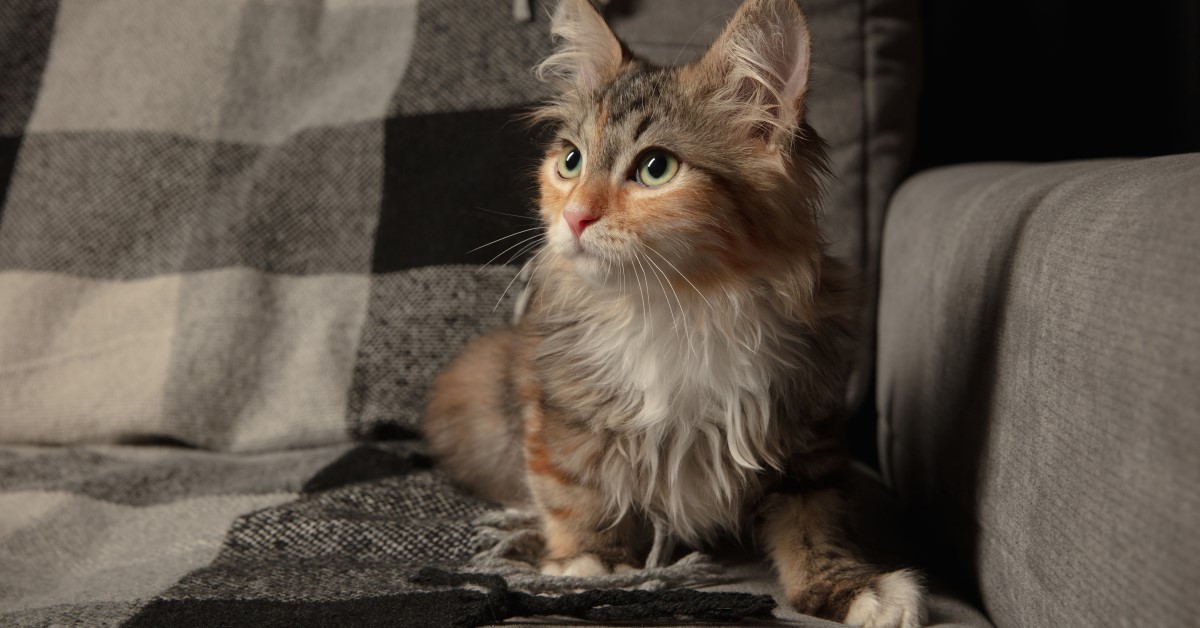How Can I Stop My Cat From Scratching the Furniture?
Understanding why your cat is scratching the furniture is key to putting a stop to it.

Every cat owner knows that cats love to scratch. They scratch when they stretch. They scratch when they play. With every scratch, they sharpen their claws, so they can scratch some more.
Maintaining a happy relationship with your cat, of course, requires finding ways to keep your cat from scratching your furniture. In this article, we will explain why cats love to scratch, along with some tips on what to do—and what not to do—to keep your furniture safe.
Why Do Cats Scratch?
In nature, cats can't get a pedicure at the vet. They are constantly finding rough objects, like tree bark, to wear down the frayed ends of their nails, so they can use their claws to capture prey and to defend themselves.
House cats can get their nails trimmed. They don't need to scratch to maintain useful nails. But veterinary science has discovered several other reasons for this common cat behavior.
- Cats scratch to escape danger. When a cat feels threatened, she bears her claws. Oddly enough, a cat can feel threatened by an inanimate object that holds odors the cat associates with danger or pain.
- Cats scratch to mark something as "mine." Cats have scent glands between their toes. Scratching identifies an object as owned by the cat. Keep that in mind the next time your cat kneads her claws on your lap!
- Cats scratch for exercise. Scratching gives cats a whole-body stretch. They raise up on their hind legs, stretch their midsection as they extrude their claws.
Cats also swat at other animals and people to say "I'm the boss." A well-socialized cat given lots of love and attention usually does not need to assert dominance. As long as scratching is directed at inanimate objects, such as the furniture, you can take easy measures to control it.
Taking a Behavioral Approach to Stopping Your Cat from Clawing Furniture
Every cat needs outlets for its instincts for scratching and marking. You can provide that outlet with a regular daily routine.
Combat Scratching with Playtime
Wild cats hunt their prey, then groom themselves, interact with other cats, and sleep, more or less in that order.
You can make meal time interesting for your cat by giving them some of their meals from a food dispenser toy. Your cat has to swat the toy or toss it in the air to get the food to come out, the same way a wild cat deals with prey. They get their food a few pieces at a time as a reward.
After your cat has finished eating is a good time to play with your cat. Let your cat burn off excess energy before it's time for grooming and a cat nap. Playing with your cat after a meal is positive reinforcement for good behavior.
Consider Your Cat's Anxiety Level
Cats scratch furniture when they are anxious. Your cat can temporarily become a fraidy cat for any number of reasons.
Maybe you adopted a second cat. Your older cat will want to communicate to the newcomer that his favorite places are off limits.
Maybe you adopted a dog. Your cat will want sharp claws, just in case.
Cats can become anxious as the result of something as simple as moving their litter box, or not changing it for a long time. But they are more likely to become anxious after physical punishment, repeated loud noises, unpleasant smells, or a visit to the vet. It is important to keep in mind that you should not reward your cat for scratching the furniture by treating her as "poor kitty" and giving her extra attention immediately after (within a minute) of doing what you don't want.
Cats are also more likely to scratch when a new human moves into the house. You can reduce this problem by introducing your cat to the new human member of your family by scent a day or two before introducing them face to face. Any kind of clothing or blanket touched by the new member of your family will carry their scent. You can give your cat a non-threatening introduction to their scent, and then let them get a cuddle as soon as your cat is no longer anxious.
What to Do When the Behavioral Approach Doesn't Work
The tried and true natural remedy for cats scratching furniture is the scratching post.
A scratching post is just what it sounds like. It is a pillar covered with rough fabric that a cat can scratch. Usually you would place it in front of the furniture you want to protect.
Some cats prefer square scratching posts that allow them to scratch with both paws at the same time. Cats like to leave their mark on their scratching post. Loose fabric is more attractive to your cat than tight (more durable) fabric.
For best results, lure your cat to the scratching post by placing the food bowl, water bowl, and favorite toys nearby. A new product called Feliscratch® by Feliway combines pheromones, catnip, and a dye to attract cats. Use as directed on the scratching post.
You can also stop scratching with aversion therapy. Apply double-sided Sticky Paws® tape to your furniture to make scratching an unpleasant experience. Or, take advantage of the fact that cats don't like sudden motion or sounds by attaching a motion detector to a floor fan in front of your furniture. Cover favorite scratching areas with aluminum foil.
When all else fails, keep your cat out of the room with vulnerable furniture. The one thing you should not do is to have your cat declawed. In some cities, the procedure is unlawful, and losing claws robs your cat of his best line of defense he or she has, including the ability to climb outdoors.
Ready to start saving money on pet wellness care?
Then take a look at Mint Wellness, the pet wellness plan that provides fast reimbursement on routine pet care. Save on vaccinations, wellness exams, preventatives, dental, and more!
Learn More


